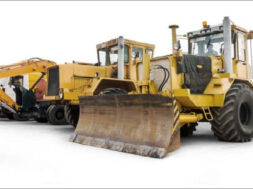Bridges connect people. They bridge dividers; rivers, gorges and at times seas. They are catalysts to development of regions, otherwise cut off from each other, and become part of the life of humans, their economy and culture. Very often they also become landmarks and at times, iconic structures very much like historic buildings or skyscrapers. Jose Kurian, Chief Engineer, Delhi Tourism and Transportation Development Corporation shares his expertise on bridge designing
The history of bridge building is as old as civilisation itself. Right from the trunk of a tree which bridged small rivulets, to masonry arch structures spanning vide rivers, there are a number of such structures for which information is available to those who are interested. In any case serious engineered bridge building started with the discovery of bricks and the science of arch building. This gave rise to single and multiple arches for long stretches to several tiered arches to cross deep gorges. Indian railways have to their credits, even today, such bridges in operation, carrying trainloads; some of them are built around the 1850s with the arrival of railways to India.
The discovery of iron led to the use of steel as a preferred material and several long span bridges got erected all over the world, many of them still commanding attention like the Sydney Harbour bridge or the Howrah bridge across river Hooghly in India.
With the development of cement and concrete, reinforced concrete bridges emerged as a cost effective and convenient alternative material, as bridges could now be built using materials available at site itself. Very soon, once the Pre-stressed Concrete technology was invented in France, India followed up very fast in experimenting with this emerging technology. Today practically every long span bridge in India is constructed using Pre-stressed Concrete.
Meanwhile the art and science of bridge designing and construction have evolved into a highly technological regime which required developments in the fields of analysis techniques, design procedures and construction methodologies. Overall, over the years, bridge building has evolved into a specialised high technology area which requires a high level of skill both in terms of planning and design as well as methods of construction.
Very early in the developments, long span bridges commanded innovative solutions which led to the developments of long arches, suspension bridges and then on to cable stayed bridges. For lesser spans, extradosed bridges turn out to be a convenient solution.
Even though long span suspension bridges are not available in India, the system has been tried at number of places with relatively shorter spans especially in case of pedestrian bridges. However very early on, India took up the Cable Stayed technology and the Vidyasagar Setu when planned was one of the longest such bridges. This magnificent bridge has now been completed and has become a landmark for the city of Kolkata. Afterwards several Cable Stayed bridges have come up across the country, at Naini across river Yamuna at Allahabad, Bandra-Worli Sealink at Mumbai and Akkar Bridge in Goa. The bridge across river at Kota, in Rajasthan is another one under construction.
Large span arch bridges covering deep gorges have also come up in India both done in concrete and in steel. The Hooni Nallah bridge was done in concrete while the railways are building a 485 m span arch bridge in steel across river Chenab in Jammu and Kashmir.
Steel has several advantages in construction of bridges as it is lighter and has the advantages of carrying it over long distances and easy handling. The emergence of high and very high strength steels has further added attraction to this material. Today several manufacturers who are capable of producing high quality and high grade steels are available in India. They are also able to produce plates of thicknesses up to 150 mm in widths up to 5 m. However the high cost and lack of good fabrication vendors severely restricts large scale use of this material.
Significant developments have also occurred in the manufacture of cement and production of concrete. A variety of cements up to grade 53 are routinely available in India. The addition of mineral admixtures like fly ash, ground granulated slag, silica fume etc. are being used while designing concrete mixes of grades up to 100 MPa. A variety of chemical admixtures are now available to produce concretes of desired performance parameters. These developments led to production and use of high strength concrete and high performance concrete. The recent innovation of using high grade super-plasticisers for producing Self Compacting Concrete, where the concrete literally flows like water, made placement of concrete simpler and faster as such concretes need no vibration and can be used where congestion of reinforcement is a problem. Added advantage is that the concrete can now be pumped and poured faster and can be placed in larger heights, provided the formwork is designed to take up the high pressure generated due to such heights.
The availability of design tools through the development of high-end software made the designers’ life simpler. Currently a host of such software is available for every conceivable activity in bridge designing, right from geometric design, structural analysis, structural design, detailing, drafting, imaging, simulation, project management etc. Specialised software is also available for simulation of wind or earthquake response or for dealing with special structures.
The development in construction technology has also been phenomenal. The developments and easy availability of construction tools and equipment makes the life of bridge contractors easy and safe. Specialised equipment for piling, boring, diaphragm walls, earthmoving, concrete making, transportation, bridge building, launching girders etc. are now being manufactured and available readily. These developments do make the construction faster and safer while improving the quality of construction.
The explosion of vehicle population in the urban areas required innovative solutions for transportation infrastructure development. While large intersections require solutions like cloverleaves and multiple tiers of grade separators, even smaller junctions require grade separators requiring a different kind of performance requirements. While for a river bridge safety and economy were the prime parameters, the urban transportation structures, which form part of the urban scenario, require an entirely different approach. As these structures are fully exposed to public view and are part of the cityscape, aesthetics became the prime parameter. Coupled with this are speed of construction, least inconvenience to the public and pollution free construction technologies became extremely important while providing for Safety, Cost effectiveness and Durability.
Several new and innovative solutions emerged. Box girders both in concrete and in steel could cover large spans using were quite popular. With pre-stressing these structures could be made lighter and spans longer. Pre-casting became extremely popular as it increases the speed of construction, while the foundations and sub-structure are erected at site, the entire super structure elements could be made ready elsewhere, away from the site reducing the inconvenience to public and general pollution. By simultaneously taking up the activities, the speed of construction also increased manifold. Additionally quality assurance became easier as literally the pre-fabrication allowed reproducing factory conditions with stricter quality control and closer monitoring. This innovation also led to composite structures both Concrete – Concrete and Steel – Concrete. A later innovation is to use precast deck slabs which has been successfully employed in an urban flyover in Delhi completed recently.
The emergence of segmental construction gave rise to innovative and aesthetic design of deck structures. Simple boxes from rectangular to trapezoidal shapes could be easily achieved. Subsequently several flyovers were constructed in a number of cities with aesthetically stunning fish-belly shapes both continuous as well as strutted. The segmental construction also made construction of curved flyovers easier.
Another trend which emerged recently is the integral bridges which totally eliminate the need for bearings. Added advantage is the safety against earthquakes as the structures becomes much slender leading to flexible structures attracting lesser earthquake forces. This also provides extremely neat junctions avoiding ugly articulations at the top of piers. The trend has further been extended by combining the integral bridge technology with segmental precast construction providing synergy of these two innovations.
The pre-casting also permits production of innovative surface textures using commercially available liners which literally create any surface texture the designer desires. These liners can successfully be used anywhere, on piers, underbelly, crash barriers or for the Reinforced earth wall used for approaches.
The author is currently engaged in the construction of the Signature Bridge across River Yamuna at Wazirabad, Delhi. This iconic structure is being created as part of a Tourism Destination Project with the object of the urban development of an area of Delhi where the development has been to a lesser extent when compared to other parts of the city. Aesthetics is the prime criteria for the design. A number of innovations mentioned in this article are employed in this project. The project is conceived in two packets, the approaches and the main cable stayed bridge. The final design of an unsymmetrical cable stayed bridge with a 155 m bow shaped inclined pylon in steel has been chosen after careful study of a number of alternatives. High strength steel with a high end fabrication and erection technologies will be employed in the erection of this magnificent structure. The project is expected to be completed by end 2013.
Conclusion
With the opening up of the economy and the greater thrust of the Government for the development of infrastructure in this country, Indian engineers are fast adapting to the developments in bridge building that is taking place globally. Literally the country now has bridges that can be compared with the best elsewhere. Yet there are still areas where the country has to catch up. The silver lining is that the beginning has already been made and there is enthusiasm all around. A whole lot of the best bridge designers and bridge building companies look at India as a favourable destination to watch for.
Cookie Consent
We use cookies to personalize your experience. By continuing to visit this website you agree to our Terms & Conditions, Privacy Policy and Cookie Policy.









